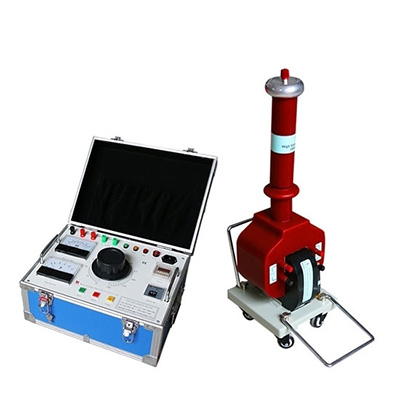How to Calibrate the Hipot Tester?
A hipot tester is an instrument used to test the withstand voltage capabilities of electrical devices, insulating materials, and insulating structures. The hipot tester usually consists of three modules: a program-controlled power supply module, a signal acquisition and conditioning module, and a computer control system. The hipot tester is an important tool for checking the voltage withstand capability of insulating materials and insulating structures, so its calibration and maintenance are crucial to ensure the accuracy and reliability of test results.
In addition, for the calibration of the hipot tester, multiple aspects need to be considered, including output voltage calibration, test capacity calibration, test accuracy calibration, test stability calibration, safety protection function calibration interface and operation calibration, environmental adaptability calibration, and electromagnetic calibration.
Calibration of hipot tester
- Output voltage calibration
Calibrating the output voltage of a hipot tester is a critical step to ensure test accuracy. Connect the tester's probe to a known accurate degree of the standard resistor, and adjust the tester's output voltage until the displayed value is consistent with the value of the standard resistor. Repeat the measurement multiple times to ensure the stability of the output voltage. - Test capacity calibration
Test capacity calibration is to verify the test accuracy of the hipot tester under different capacities. Use different volumes of test samples to conduct tests and record test results. Compare test results with standard values of known capacity to verify the accuracy of the tester. If there are errors, corresponding adjustments need to be made. - Test accuracy calibration

Test accuracy calibration is to ensure the measurement accuracy of the hipot tester under various conditions. At different temperatures, humidity, pressure, etc.
Carry out the test under the conditions and record the test results. Compare test results to known standard values to verify the accuracy of the tester. If there are errors, corresponding adjustments need to be made. - Test stability calibration
Test stability calibration is to verify that the hipot tester maintains stable performance over a long period. Take multiple repeated measurements and
record changes in measurement results. If the measurement results are stable, it means that the stability of the tester is good. If there are deviations, adjustments need to be made accordingly. - Safety protection function calibration
The safety protection function calibration is to verify whether the safety protection function of the hipot tester is working properly. By simulating various abnormal conditions, such as over-voltage, and over-current, it is verified whether the tester can respond correctly and trigger corresponding protective measures. Ensure that the tester can safely protect test samples and operators under abnormal conditions. - Interface and operation calibration
Interface and operation calibration is to verify whether the human-computer interaction of the hipot tester meets user needs and operating habits. Check whether the display interface of the tester is clear and easy to read and whether the buttons, knobs, and other operating parts are flexible and reliable. At the same time, check whether the menu settings and function options of the tester meet the user's needs and usage habits. If there are problems, corresponding adjustments and optimizations need to be made. - Environmental adaptability calibration
Environmental adaptability calibration is to verify the performance of the hipot tester in different environments. Place the tester in various extreme environmental conditions (such as high temperature, low temperature, high humidity, low humidity, strong magnetic field, etc.) and perform tests. Record test results to evaluate the tester's environmental suitability. If adaptation does not exist, corresponding improvements and optimizations need to be made. - Electromagnetic compatibility calibration
Electromagnetic compatibility calibration is to verify the performance of the withstand voltage tester under electromagnetic interference. Conduct electromagnetic radiation emission and immunity tests on the tester to evaluate its performance in the electromagnetic environment. If there is an electromagnetic interference problem, corresponding optimization, and improvements need to be made to improve its electromagnetic compatibility.

